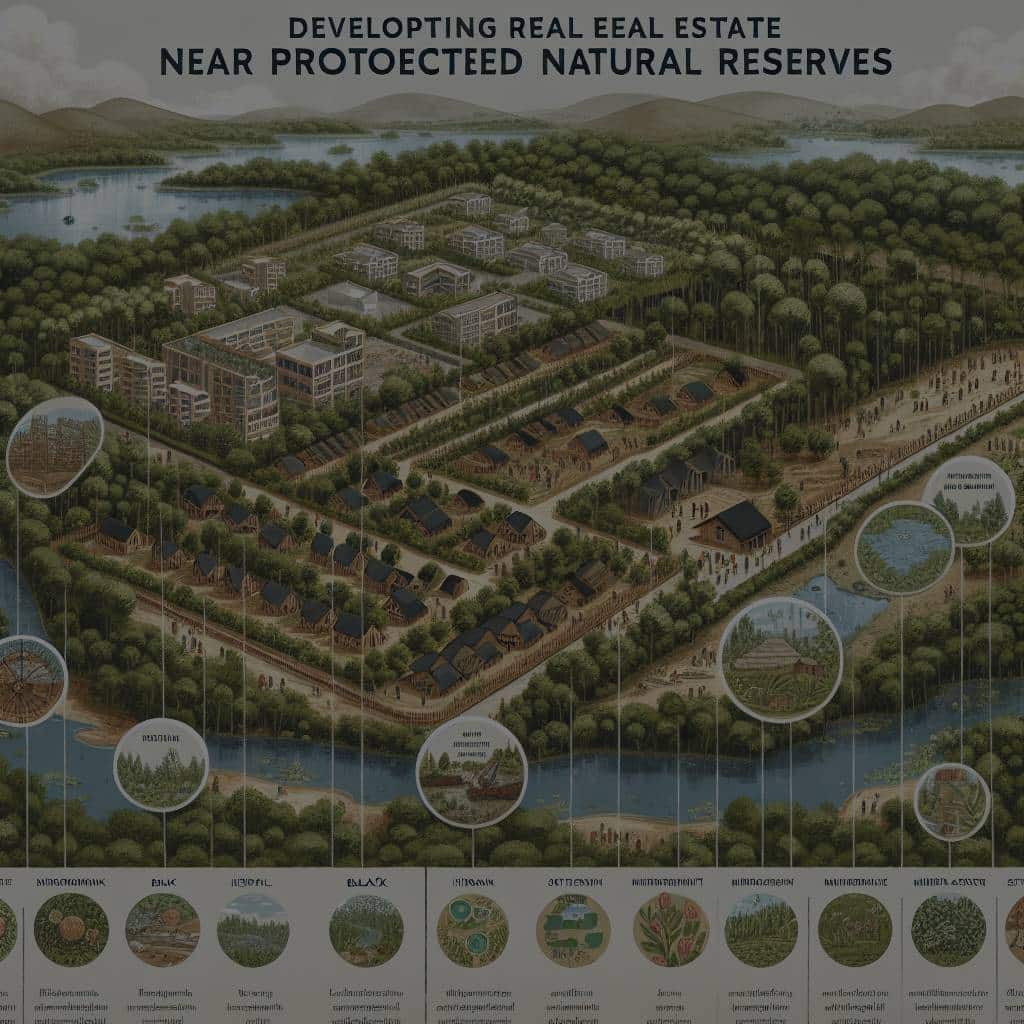What Strategies Can Be Used to Develop Real Estate in Proximity to Protected Natural Reserves?

As sane individuals, it’s undeniable that we have a deep connection with nature. It’s where we find peace, solitude, and inspiration. Moreover, it is integral to our survival and the survival of countless species on earth. However, our insatiable appetite for progress and development often puts us at odds with the task of preserving these natural spaces. The tension between real estate development and the conservation of protected natural reserves is a prime example. The challenge is to find a balance that respects the rights of property owners and developers while also preserving the integrity of these protected lands. Let’s delve into the strategies that can be employed to strike that delicate balance.
Understanding Land Conservation
Land conservation is a critical aspect of environmental protection that focuses on preserving areas of natural beauty, historical significance, or ecological importance. It involves a variety of strategies, including the establishment of parks and protected areas, regulation of land use, and the acquisition of land for conservation purposes.
Additional reading : What Are the Long-Term Impacts of Self-Driving Cars on Suburban Real Estate?
This is where Crossref, a scholarly platform that provides metadata services, plays a crucial role. Through Crossref, researchers, scholars, and policy-makers have access to a treasure trove of information on land conservation and related topics. It enables the sharing of ideas, techniques, and research findings that can help reconcile real estate development with conservation goals.
Recognizing Indigenous Rights and Community Involvement
Protection of land doesn’t only involve the land itself. It also entails the protection of the indigenous communities that have been its custodians for centuries. These communities have an intimate relationship with the land and have often managed it sustainably. Recognizing their rights and involving them in land management decisions is a critical strategy for balancing development and conservation.
In the same genre : What Are the Long-Term Impacts of Self-Driving Cars on Suburban Real Estate?
Indigenous communities usually have a profound understanding of their local ecosystems. Their knowledge can prove invaluable in developing strategies that allow for real estate development while minimizing its impact on the ecosystem. Moreover, involving local communities can help foster a sense of ownership and responsibility towards the land, fostering its long-term protection.
Incorporating Conservation Trusts
Conservation trusts are non-profit organizations that actively work to conserve land by undertaking or aiding in land or conservation easement acquisition, or by their stewardship over such land or easements. They can be effective partners in real estate development near protected areas.
Conservation trusts can buy the development rights from landowners, effectively preventing future development. This allows property owners to get a fair return on their property without resorting to environmentally damaging development. Furthermore, these trusts can work with developers to create environmentally friendly building designs and site plans that respect the natural landscape and minimize ecological impact.
Advocating Sustainable Forest Management
Forests are often in the crosshairs of real estate development. However, rather than viewing forests solely as obstacles to be cleared, developers can adopt strategies of sustainable forest management. This approach respects the ecological value of forests while allowing for development.
Sustainable forest management involves using the forest’s resources in a way that respects the ecosystem’s capacity to regenerate. It includes concepts such as selective logging, where only certain trees are harvested, and replanting, where new trees are planted to replace those that have been cut down. Incorporating these principles in real estate development can allow for progress without sacrificing the health of our forests.
Prioritizing Adaptive Reuse and Brownfield Development
Instead of always looking for greenfield sites (undeveloped land) for real estate projects, developers can prioritize brownfield sites and adaptive reuse. Brownfield sites are previously developed lands that are currently vacant or underused. They often exist in urban areas and can be redeveloped to provide much-needed housing or commercial space.
Adaptive reuse, on the other hand, involves repurposing existing buildings for new uses. This approach can save on construction costs, preserve architectural heritage, and avoid the need to encroach on protected lands. By prioritizing these strategies, developers can meet their business goals while respecting the need for land conservation.
The challenge of reconciling real estate development with land conservation is complex, but it’s not insurmountable. By understanding and respecting the value of our natural spaces, involving indigenous communities, partnering with conservation trusts, advocating for sustainable forest management, and prioritizing adaptive reuse and brownfield development, we can pave the way for a future where progress and conservation go hand in hand. Remember, protecting our natural reserves is not just about preserving their aesthetic value, but also about ensuring the survival of the complex ecosystems that support life on earth.
Utilizing Riparian Areas and Climate Change Mitigation Strategies
Another way to strike a balance between real estate development and land conservation is by using riparian areas and incorporating climate change mitigation strategies. Riparian areas, or land adjacent to rivers or streams, play a vital role in maintaining water quality, providing wildlife habitats, and stabilizing banks against erosion. In the context of real estate development, these areas can serve as natural buffers between development sites and protected areas.
Climate change mitigation strategies can also be employed to reduce the environmental impact of real estate development. These strategies can include the use of renewable energy sources, energy-efficient building designs, and the use of sustainable materials in construction. In addition, by integrating green spaces into development plans, developers can help preserve the local biodiversity, sequester carbon, and provide residents with accessible recreational space.
Developers can consult with organizations such as the United States Environmental Protection Agency and National Parks Service to ensure they are adhering to best practices for riparian area management and climate change mitigation. Furthermore, they can utilize resources such as Google Scholar to access a wealth of academic articles and research papers on sustainable development practices.
The Role of the Federal Government and Land Rights
Lastly, we can’t ignore the role of the federal government in managing land rights and conservation areas. Government policies and regulations can set the tone for how real estate development is carried out, especially near protected lands.
Governments have a unique role in designating and enforcing conservation easements. These are legal agreements that restrict the use of land to protect its conservation values. Landowners who donate conservation easements to a land trust can often benefit from tax deductions. This can encourage property owners to contribute to land conservation efforts.
Moreover, the federal government can also play a role in supporting the rights of indigenous peoples. By recognizing indigenous land rights, the government can ensure the protection of ancestral lands and the traditional practices that have sustained them for generations. This can also minimize conflicts and foster stronger relationships between real estate developers and indigenous communities.
Conclusion
The task of developing real estate in proximity to protected natural reserves is indeed a sensitive one. It requires careful planning, thoughtful decision-making, and a genuine respect for the natural world. Yet, it can be done. By harnessing the power of land conservation, involving indigenous communities, partnering with land trusts, advocating for sustainable forest management, and prioritizing brownfield development and adaptive reuse, we can ensure that development does not come at the expense of our precious natural resources.
By understanding the critical roles that riparian areas and climate change mitigation strategies play and acknowledging the significant influence of federal government and land rights, we can pave the way for sustainable development. Let’s remember that the goal is not just to build properties but to create harmonious, vibrant, and ecologically responsible communities that will stand the test of time. We must never lose sight of the fact that as much as we are part of nature, nature is a part of us, and protecting it is simply protecting ourselves.
